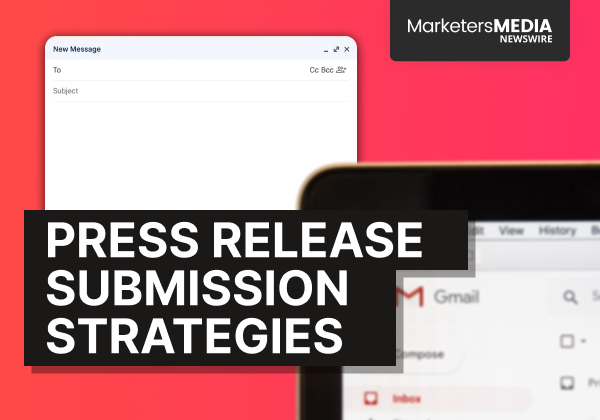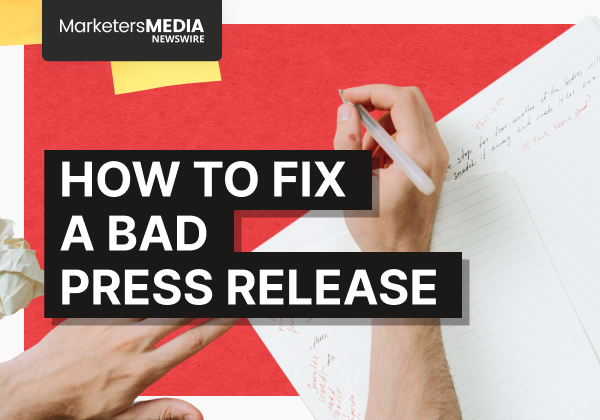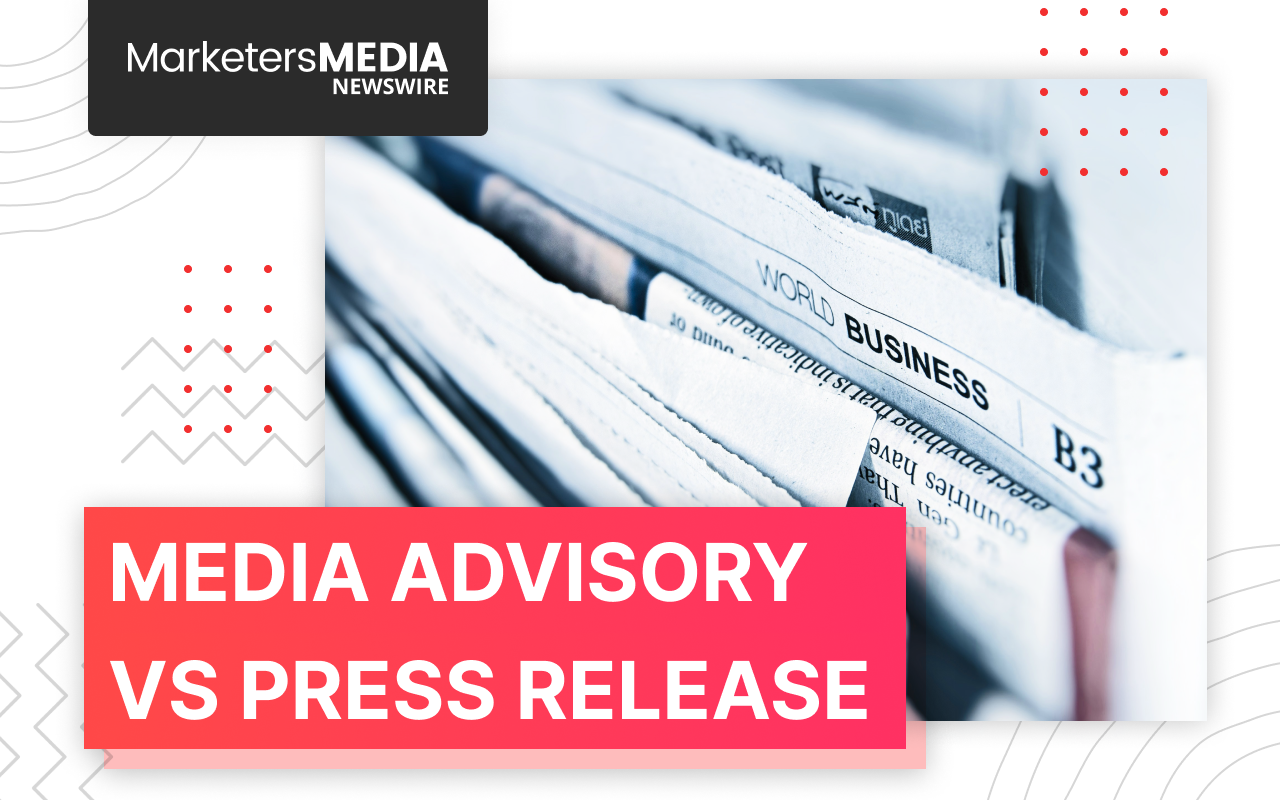Table of Content
You've got news to share about your business. Maybe it’s a new product, a big hire, or a major milestone.
You know a press release is the way to go, but then you hit a wall.
Who do you send it to? How do you keep it out of the spam folder? And most importantly, how do you get journalists to actually read it?
If you're nodding along, you're not alone. Many businesses hit the same roadblocks.
Sending a press release isn't just about emailing every journalist you find online. That’s a quick way to get ignored—or worse, blocked.
So, what's the solution?
There are actually two main ways to get your press release out there:
(1) Reaching out to journalists directly: Building a targeted media list and crafting personalized pitches to journalists who cover your industry,
(2) Using a PR submission service: Leveraging established networks to quickly distribute your press release to a wide audience.
How to Contact Journalists Directly (If You Must)
If you're up for the challenge, contacting journalists directly is an option—but it's no walk in the park.
First, you need to identify the right editors, journalists, and reporters who are most likely to care about what you have to say. This means finding those who regularly cover your industry or topic. It's a time-consuming task, involving lots of digging through past articles to see who writes about what and if their audience would actually be interested in your story.
But not only that, you need to keep track of their career moves. Journalists change beats or publications more often than you might expect, so your list needs constant updating.
Once you've got your list, the next step is to write a pitch that stands out. Your pitch should be short, sweet, and to the point, focusing on why your news is worth theirs and their audience’s time. Journalists are busy people who see a ton of press releases every day, so make yours catchy and relevant.
A few tips to keep in mind for your pitch:
- Don’t just put "press release" in the subject line; highlight the key point.
- Paste the press release into the text of the email. Every extra click is an opportunity to lose the reader. Plus, if someone searches their email a few months later for a specific subject, your press release will show up in their search results too.
- Don't attach images in your email. Include a link or use cloud drives like Dropbox or OneDrive.
- Include image descriptions (cutlines) directly in the images' metadata and write them out in a text file or the press release.
You’ve sent your press release, but following up is also another key part. But you don’t want to be that annoying person who keeps calling. A polite follow-up can be helpful, but always be respectful of their time and space.
Using a PR Submission Service (The Efficient Way)
If all that sounds like too much work (and let's be real, it often is), there’s a simpler option: using a PR submission service like MarketersMEDIA Newswire. These services act like a middleman, sending your press release out to a wide range of media contacts.
MarketersMEDIA Newswire helps streamline the submission process by ensuring your press release reaches a broad and relevant audience, connecting your news with key media endpoints, including major outlets like Business Insider, AP News, Yahoo News, and Barchart.
One of the key benefits of using MarketersMEDIA Newswire is the access to our established relationships with media outlets. With years of experience, we’ve built trust with these organizations, giving your press release a better chance of being noticed and picked up. Your news could reach over 2,000 media endpoints, maximizing the potential for coverage.
All you need to do is write your press release and choose the submission package based on the reach you want. MarketersMEDIA Newswire also provides analytics to track the reach and impact of your press release, ensuring you can measure its success.
Using a PR submission service can significantly simplify the process of getting your news out there.
However, even the best submission service can't guarantee success if your press release isn't well-crafted. So, regardless of which method you choose for submission, the quality of your press release is crucial.
Let’s take a look at how to craft one that stands out.
How to Create a Press Release That Gets Results
#1 Write for Journalists, Not for Yourself
Many businesses make the mistake of focusing too much on promoting themselves rather than providing newsworthy content. Journalists are looking for stories that will engage their audience, so highlight what's relevant and timely about your news.
Keep your press release focused on the news itself, rather than using it as a marketing piece. This approach increases the chances of your story being picked up.
#2 Nail the Headline
Your headline should be clear, concise, and compelling. It needs to quickly convey the main point of your news. Avoid clickbait or overly sensational language – journalists can see right through that.
Stick to the key facts to give journalists a clear idea of the story, making it easier for them to decide to read further.
#3 Front-Load the Important Information
In journalism, time is of the essence. Journalists often skim through press releases, so it's vital to get to the point quickly.
Start with the most critical information—who, what, when, where, why, and how—right at the beginning. This approach, known as the inverted pyramid style, helps ensure that the most newsworthy elements are communicated upfront.
It also helps in keeping the content concise and easily digestible.
#4 Use Engaging Quotes and Solid Data
Quotes can add a human element to your press release and help convey emotion or perspective.
Choose quotes from key figures or experts that add value and insight. In addition to quotes, including relevant data or statistics can help bolster your story, providing factual support that journalists can use in their articles.
This combination of quotes and data makes your press release more compelling and authoritative.
#5 Time It Right
Timing can play a crucial role in the success of your press release.
Be mindful of the news cycle and avoid releasing your news on days when it might get overshadowed by major events or competing stories.
Early mornings are generally a good time to send out press releases, as journalists plan their day and look for fresh stories to cover.
For more detailed advice on when to send your press release, check out our blog post on the best time to send a press release. Well-timed releases are more likely to get noticed and picked up.
Is Your Press Release Working? Here's How to Tell
After you've sent out your press release, you'll want to know if it's having an impact. Here's how to gauge if your press release is doing its job:
#1 Media Pickups
One of the best ways to measure success is by seeing if news outlets are picking up your release or using it in their articles.
For example, DMR News not only got featured on Business Insider, but also show up prominently on Google search results when someone searched “DMR News”.
Imagine your press release landing on a major site like that—MarketersMEDIA can make it happen.
To keep track of where your news appears, use tools like Google Alerts. This way, you’ll be notified whenever your company name or key phrases from your release pop up online.
#2 Website Traffic
While the primary aim of a press release is to generate media coverage rather than direct SEO benefits, it's still useful to check your website analytics.
Did you see a spike in visitors after your release was published? Pay close attention to the specific pages you highlighted in your press release; they should see more traffic if your release was effective.
Tools like Google Analytics can help you track where your traffic is coming from. Even if SEO isn't the main focus, these insights can help measure the overall impact of your press release.
#3 Social Media Engagement
Monitor social media platforms for mentions of your company or the news from your release.
Are people talking about it? Sharing it? This can be a good indicator of how interesting your news is to the general public.
#4 Inquiries and Leads
Has there been an uptick in customer inquiries or potential business leads since your release went out?
Sometimes the impact isn't immediate, but you might see increased interest in the days and weeks following your announcement. Keep track of any increase in customer inquiries or requests for more information.
If Your Release Isn't Getting Traction, What to Do?
Sometimes, despite your best efforts, a press release might not get the attention you hoped for. Don't be discouraged. Instead:
#1 Analyze the Possible Reasons
Was your timing off? Did a bigger news story overshadow yours? Was your angle truly newsworthy?
It’s possible that you made some mistakes that others have made before. Take a look at our good and bad press release examples to find out. This can guide you on what to avoid in the future.
#2 Get Feedback
If you have any media contacts, don't be afraid to ask for their honest input. Journalists can provide valuable insights on why the release didn't catch on.
Or you can also reach out to us at MarketersMEDIA Newswire. Our support team can help pinpoint what’s working and what’s not—perhaps the headline wasn't engaging enough, or the content wasn’t quite right for their audience.
This feedback can be invaluable for improving your future press releases.
#3 Adjust Your Strategy
Use what you've learned to adjust your strategy for the next release. This might mean focusing on a different angle, improving your headline writing, or tweaking your distribution method. Perhaps you need to work on building stronger relationships with key journalists in your industry.
#4 Keep at It
Remember, PR is often about building momentum over time. One press release rarely tells the whole story of a company's media presence. Keep refining your approach with each release, learning from both successes and misses.
Consistency is key—the more you put yourself out there, the better you'll become at crafting newsworthy stories and the more familiar journalists will become with your brand.
Ready to Make Headlines? Here's Your Next Step
Start writing your press release. To help you get started, check out these essential resources:
- Press Release 101: Everything You Need to Know to Get Started - A comprehensive guide for beginners.
- 24 Best Press Release Examples [For All Occasions] - Get inspired by effective press releases across different scenarios.
- Bad Press Release Examples You Should Not Follow (And How to Fix Them) - Learn from common mistakes and how to correct them.
Use these resources to craft a compelling press release that captures attention and conveys your news effectively.
Keep sharing your story, refining your approach, and connecting with your audience. Over time, your media presence will grow, and your efforts will pay off.
Free Press Release Template
Tell us where to send your PDF:







![10 Free Press Release Templates [Plus a Step-by-Step Guide]](https://marketersmedia.com/wp-content/uploads/2024/08/10-Free-Press-Release-Templates-Plus-a-Step-by-Step-Guide.png)
